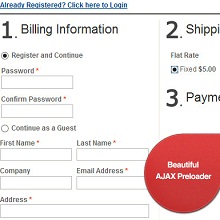With so many mobile users out there who are always looking for the newest and best apps, you can reach a lot of people if you create a user-friendly app that becomes popular. By choosing to develop an Android app, you are already at an advantage since the audience is larger than the iOS community, and there are a few tips that can make the process easier.
Do Some Research

Image via Flickr by Intel Free Press
While you are developing your app, check out the Google Play store regularly and view the other apps within the same category. This app store ranks apps on “Top Free”, “Top Paid”, “Most Popular,” and more. This gives you the option to view what makes other apps so popular and develop your own apps based on these positive features. It can also help you determine what you don’t want to do, since you can read user reviews that include detailed complaints about the apps. This strategy can also prevent you from creating a duplicate app to one that already exists.
Layout and Design
Unlike Apple devices, Android gadgets come with a broad range of screen sizes, so it is important to make sure your app will work with viewing areas that are both large and small. For example, Samsung offers the large Note and the smaller Galaxy S, both with full HD picture but different size displays. So for Android apps, you must take into account the screen size when developing for the smaller Galaxy S versus its other larger Samsung relatives. Additionally, most mobile device screens can rotate, so it is also important to make sure your app works in both portrait and landscape mode. You can use online resources to determine the easiest ways to maximize your app for rotating screens and larger devices.
Include Other Languages
Even if you aren’t fluent in another language, it is crucial to offer the content in your Android app to those who speak other languages. Users around the world have Android devices, and for many, English is not a known language. Along with developing the app to include other languages, you should also include a localization feature that will help determine what language the user might prefer based on where he or she is located. This allows a user in Japan to immediately receive the option to switch the information into Japanese for easier use.
Incorporate Unique Features
Android offers a lot of cool extras that you can include in your apps to improve the overall experience. For example, you may want to embed a code that provides assistance to users that have visual impairment, or a code that transforms text into speech for those who prefer to listen instead of read. You can also embed an easily accessible search into your app by using the top search engine in the world, Google. If your app includes any location services, utilize the benefits of Google Maps to make it easier to find a place. You can also embed video and audio files so that users can play them without having to visit outside websites.
Make Sure Apps Stay Responsive
If you are using complicated steps on your app, this may result in the app freezing. This causes a lot of frustration for users, and some of them may even delete the app if the problem doesn’t resolve quickly. If this is the case, be sure to create a separate worker thread that can run in the background. If your app does take some time to load, you should include a message that tells users that it is making progress. This helps users to be patient and wait, instead of killing the app because they think it has crashed.
Rely on User Feedback
With so many avenues for users to air their complaints with an app, there is no reason for you to not use this feedback to make it better. Be sure that you check out the Google Play store and online forums regularly to learn more about what people like and dislike about your app. After you review the feedback, consider responding directly to users and then making the changes if they make sense for your app.
App development continues to grow in popularity, and you can become part of this trend by developing quality Android apps that people will enjoy using on their mobile devices.





